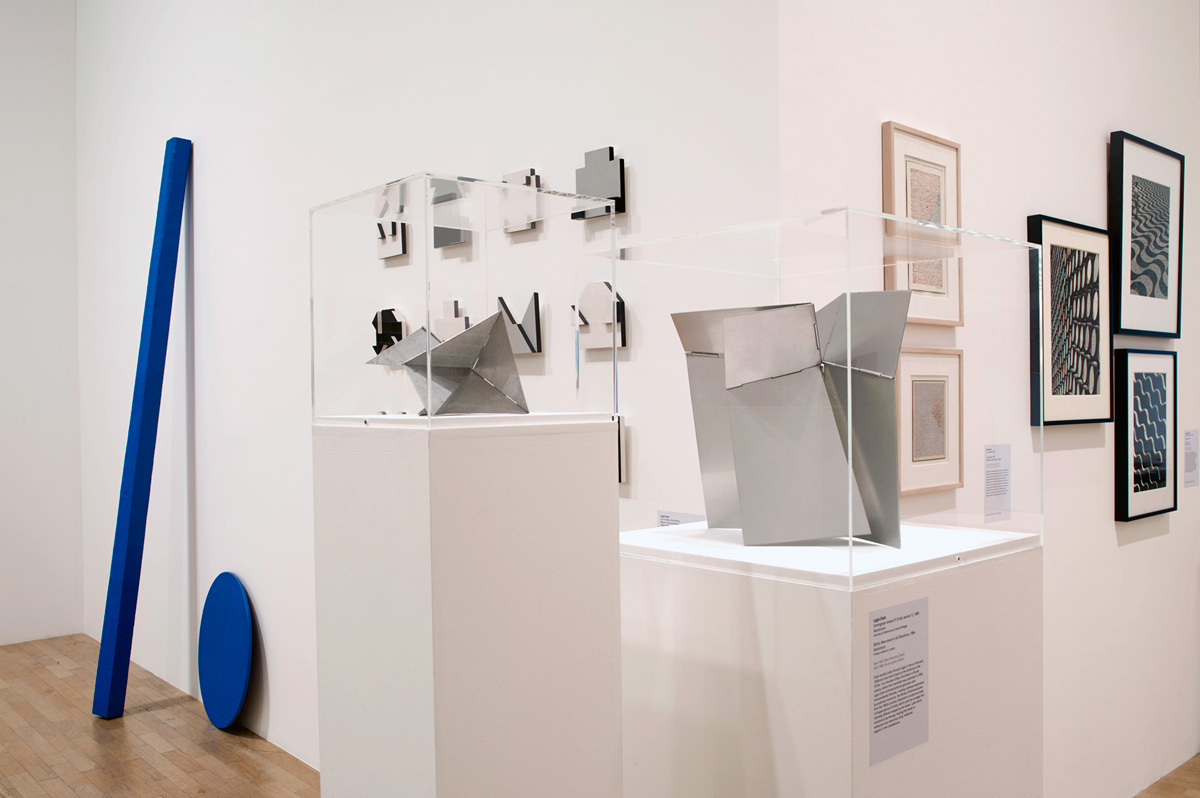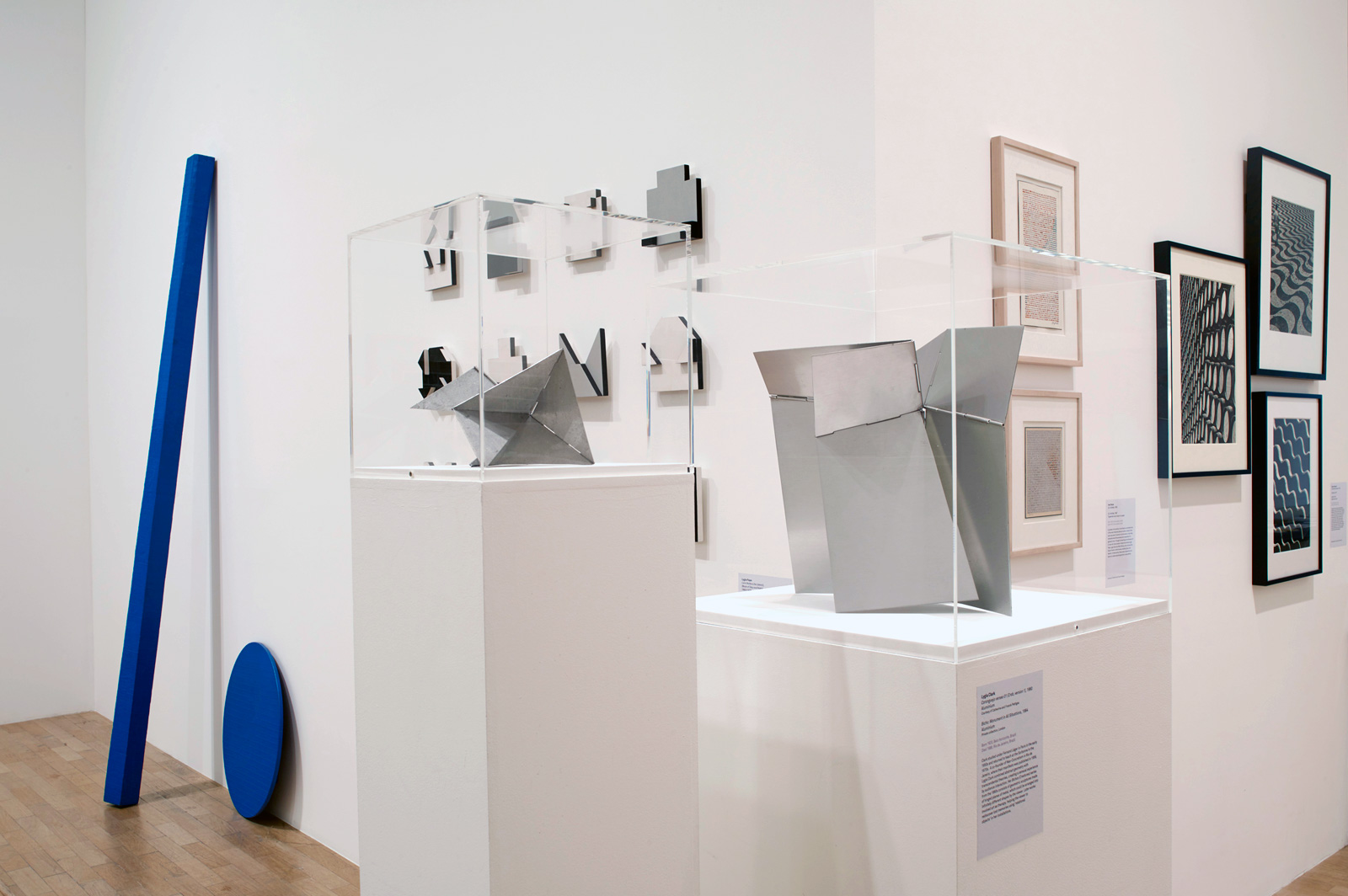Issues of Display
Protecting the Object, Damaging the Artwork
Since the landmark 1997 symposium entitled “Modern Art: Who Cares?,” there has been an increased effort by the extended art community (art historians, critics, philosophers, curators, conservators, scientists and artists) to cultivate a holistic understanding of the work of art and preserve it as authentically as possible, not only with respect to its materials but also to its intellectual resonance. However, inside the exhibition space, at the point where the artwork comes in contact with its audience, there are cases where a major intervention to the work is taking place unchallenged: leading institutions are at times displaying artworks in ways that completely defy those artworks’ mode of address.
The term “mode of address” here refers to the way an artwork engages its audience. This includes the practical parameters that pertain to what senses an artwork is intended to stimulate and what interactive possibilities it offers to the spectators. It also encompasses the tone of address: the abstract qualities that manifest themselves in the way the artwork is positioned within its staging environment and in relationship with its audience – qualities such as assertiveness, confrontation, aggression, formality, trust, humility, or empathy. For many artworks the mode of address is a primary attribute; it follows that when the artwork’s mode of address is altered, even if the artwork remains materially intact, its authenticity is thrown into dispute. A prime example of this can be seen in the case study of Bicho (1960), a work by Lygia Clark.
Lygia Clark (1920-1988) was a key figure – along with Ferreira Gullar, Lygia Pape, Theon Spanudis, and Helio Oiticica among others – of the Neo-Concrete movement that developed in Brazil between 1959 and 1961. The movement, while retaining the language of geometric abstraction and the social concerns of the Concrete movement, questioned its rational and detached empiricism. It called for an art that embraced sensuality and subjectivity, and positioned its audience as active participants. Although Clark had started her art practice as an abstract painter in the late 1940’s, her paintings soon transitioned to sculptural objects that offered tactile and participatory experiences for their audiences. Next, they lost their fixed shape and, following that, even lost their materiality and became written propositions for the audience to materialize. By the mid-1970s, Clark’s increasing concern with the potential of art to change people’s lives led her to shift her career from exhibiting artist to the practice of idiosyncratic holistic therapy. In this capacity, the artist constructed and handled objects, but this time as functional and ephemeral tools for healing.
Bicho (translated in English as animal1, beast2, creature3, or critter4) is a work developed by Clark between 1960 and 1964. It involves a series of objects, most of them produced as editions in unlimited copies. The artist first constructed studies in various materials, including balsa wood and cardboard, and then had the designs industrially fabricated in metal. The objects are designed to be animated by the hands of each individual member of the audience; the spectator, turned participant, is to engage with the artwork physically through a process of co-movement.5
Clark discusses her work Bicho in a text from 1960 as “alive” and “essentially active” and presents the relationship between object and audience as follows: “The inter-linking of the spectator’s action and the ‘animal’s’ immediate answer is what forms this new relationship, made possible precisely because ‘the animal’ moves—i.e., has a life of its own.”6 It is evident that, Bicho, for the artist, is a work about the transforming energy between two bodies in contact, the body of the “animal” and the body of the “spectator.” By merging object and audience together in action the artist builds art as one living organism. This physically manifested – and absolute – interdependence between object and audience is one of Clark’s main contributions to art history. Bicho might be visually compelling but primarily it is an “animal” that needs an audience to provide it with life. It is telling that although the artist wrote often about the interactive qualities of Bicho and the significance of the audience’s participation, she made no mention of the artwork’s visual properties in any of her texts.
As an artist devoted to a socially concerned art practice, Clark declared in 1966, “We refuse the artist who intends to transmit through his object a complete message without the participation of the spectator.”7 Here she directly contests the autonomy of the art objects and advocates the audience’s emancipation through active participation. With Bicho, Clark questioned the value of artworks as unique and precious objects and challenged the institutional mechanisms of commodification. At the same time, she opposed the hegemony of the visual and built a space for the audience to have an embodied experience.
For Bicho, the interaction of the audience is as intrinsic as its metal parts and, for Clark, securing the works’ intended conditions of display was of primary importance. As the art critic and curator Guy Brett has written, “Clark herself fought a constant battle for people to be able to continue to handle and play with the sculptures after they had passed into public and private collections. They were never intended to be merely looked at.”8 However, in most of the exhibitions that have taken place since Clark’s death in 1988, the visitors’ handling of Bicho is forbidden and the work is presented as conventional sculpture. This has also been the case for two recent exhibitions that took place in the UK.

Fig 1. Lygia Clark
Bicho Monument in all Situations, 1964
Installation view of Adventures of the Black Square: Abstract Art and Society 1915 – 2015
Exhibition held at the Whitechapel Gallery, London, 15 January – 6 April 2015
Courtesy Whitechapel Gallery, Whitechapel Gallery Archive
In the exhibition Lygia Clark: Organic Planes (Henry Moore Institute, Leeds, 2014), interaction with Bicho was not allowed. The press release stated, “Today the ‘Bichos’ are complex objects to display. Unless they are reproductions made specifically for exhibition they can no longer be manipulated.”9 The text doesn’t justify this assertion, but confirms that it goes against the artist’s intention.
In a second exhibition, Adventures of the Black Square, held at the Whitechapel Gallery in London in 2015, the work Bicho: Monument in All Situations (1964) was shown inside a display case. Although curator Iwona Blazwick mentioned in the exhibition’s catalogue that artists like Clark “dispelled the veneration of the image or the statue by taking objects off the plinth and handing them to the viewer,” she did not address the decision to present the object enclosed inside a display case.10
Bicho was presented in many exhibitions during the lifetime of the artist and Clark had clearly defined the parameters of the interaction between the object and the audience both in her writings and in the way she exhibited the object. There is not only an intended mode of address (that might be questioned as potentially finite and open to change) but an actual, concrete, and historically established mode of address to which the first 29-year exhibition history of the artwork attests. And, yet the work is today exhibited in ways that go against the artwork’s history, and, essentially, against its integrity.
So, why it is that “Bicho can no longer be manipulated”? The main argument, based on the need to protect the objects from wear and breakage, seems insufficient. The developing discourse in contemporary art conservation suggests that, in individual cases, decomposition, wear and breakage can be conceptually sound and, thus, acceptable developments in the lifespan of an artwork and, in those cases, change-preventive interventions ought to be avoided.11 In the case of Bicho, audience interaction is a necessary condition for the artwork to exist and, since handling can bring about wear and breakage over time, it follows that wear and breakage is a legitimate potential development for the specific objects.
However, when an artwork’s sale agreement doesn’t sanction parameters of display, private and public collectors might have the legal right to pose their own rules – regardless of whether these rules honor the artist’s intention and the artwork’s integrity. On the other hand, art institutions – as the intellectual guardians of our cultural heritage – have the responsibility to refrain from presenting an externally constrained object as the authentic artwork. The authenticity of an artwork does not solely concern its material makeup, but pertains also to the preservation of the artwork’s non-material properties i.e. the conceptual, expressive, aesthetic and interactive properties that constitute the artwork and which the artwork has by intention.
In the case of the two recent exhibitions cited above, the mode of address of Bicho was dramatically altered. Visitors were deprived of an embodied experience with the artwork and were directed towards a solely visual and cerebral understanding of it. At the same time, when the objects are presented inside display cases or on raised plinths – in other words, when they are presented as invaluable, rare, and fragile objects, in danger of being damaged by human touch – the quality of the non-hierarchical relationship the artist was developing between artwork and audience is subverted. The artwork is thereby inserted in a family of objects that Bicho originally existed against. This misrepresentation not only obliterates the work’s historical significance and misinforms the public, it also eradicates the potentiality of the artwork’s intended social role – given that this role was seen by the artist as wholly dependent on a specific relationship between object and audience. Further, when institutions do not represent art history accurately, they also hold art history back, since for art to evolve the new generation of artists needs to experience the work of the past, as it was intended to be experienced. Finally, with a compromised public presentation of a work, a historical precedent is created, that will, very likely, be followed by other similar presentations until the authentic artwork is completely forgotten.
In the major retrospective exhibition, Lygia Clark: The Abandonment of Art, 1948–1988 (Museum of Modern Art, New York, 2014), the museum gave its audience an opportunity to physically interact with a small series of Bicho, though it also presented quite an extensive series of Bicho for which interaction was banned. The museum referred to the objects in the former series as ‘replicas’ while the objects in the latter series were presented as the originals.12 Both versions were industrially produced, made with the same materials, based on the same designs. The differences between them are the date of the objects’ manufacture and the fact that one version was ordered by the artist’s estate and the other was ordered by the artist. The issue with this type of presentation is that it can create a hierarchical divide inside the exhibition space, between a Bicho that can be touched and a Bicho that cannot be touched. To a degree, it is an issue of terminology: the term ‘replica’ is more demeaning than that of ‘exhibition copy’ as it connotes a ‘non-original’ and thus bears an evaluative dimension. By creating a space for discrimination between ‘more’ and ‘less’ important objects and then providing access only to the latter, the subtext of trust, equality, synergy and interdependence that defines the original relationship of Bicho with its audience is destroyed. Further, the concept of the ‘original’ goes against both the material reality and the conceptual identity of Bicho. Clark, justifying her decision to produce Bicho as unlimited multiples, had noted that “a ‘multiple’ is a concept which negates, which refutes the aristocratic idea of the originality of an artist’s work. This is why I do not like the idea of a limited number of ‘multiples’; by definition it should be unlimited.”13
One way that MoMA could have included the constrained objects in the exhibition without altering the sensitive dynamics of the relationship between object and audience would have been to present these objects as archival materials and not as the original artworks, both in terms of how the objects were positioned in space and how they were described. For transparency and educational purposes, it would be important to include (inside the exhibition space) information on who imposes restrictions on handling the objects. In this scenario, audiences would be informed of what constitutes the artist’s decision (and what does not), as well as what constitutes part of the artwork (and what does not), thus being given access to both the work and its history.
It is a futile effort to devote years of research, debate, and work in preserving the most acute details of an artwork if the artwork is not to be encountered by an audience. Two questions seem to be pressing: for whom is the work being preserved? What is it that is being preserved? Unless the same scientific and intellectual rigor that is applied to questions of interpretation and conservation of artworks is also applied to decisions concerning conditions of display, all efforts devoted by the extended art community to preserve the work of art are lost.
1 Guy Brett, “Lygia Clark: The Borderline Between Art and Life,” Third Text (Autumn 1987): 68.
2 Catherine de Zegher, introduction to Inside the Visible (Cambridge, Massachusetts: The MIT Press, 1996), 34.
3 Henry Moore Institute, “Lygia Clark: Organic Planes” Press Release, 2014. Accessed: 15 March 2015. https://www.henry-moore.org/whats-on/2014/09/24/lygia-clark-organic-planes.
4 André Lepecki, “Affective geometry, immanent acts: Lygia Clark and performance,” in Lygia Clark: the Abandonment of Art, 1948-1988, (New York: Museum of Modern Art, 2014), 279.
5 For a representative image of Bicho visit: www.tate.org.uk/learn/online-resources/glossary/g/grupo-frente.
6 Lygia Clark, “Animals’ 1960,” in Signals (London), Vol.1, No. 7 (April-May 1965): 2.
7 Lygia Clark, “We Refuse,” 1966. Accessed: 4 May 2015. http://issuu.com/lygiaclark/docs/1966-we-refuse_e/3?e=0.
8 Guy Brett, “Lygia Clark: In Search of the Body,” Art in America (July 1994): 61.
9 Henry Moore Institute, “Lygia Clark: Organic Planes” Press Release.
10 Iwona Blazwick, “Utopia,” in Adventures of the Black Square: Abstract Art and Society 1915 – 2015 (Munich: Prestel Verlag, 2015), 16.
11 See, for instance, Glenn Wharton, “The Challenges of Conserving Contemporary Art,” in Bruce Altshuler (ed.) Collecting the New: Museums and Contemporary Art (Princeton: Princeton University Press, 2006), 163-178.
12 Cornelia H. Butler, “A Space Open to Time,” in Lygia Clark: the Abandonment of Art, 1948-1988 (New York: Museum of Modern Art, 2014), 16.
13 Lygia Clark, Animals LC1, LC2, LC3 (Bath: Unlimited Gallery, 1969), 3.



